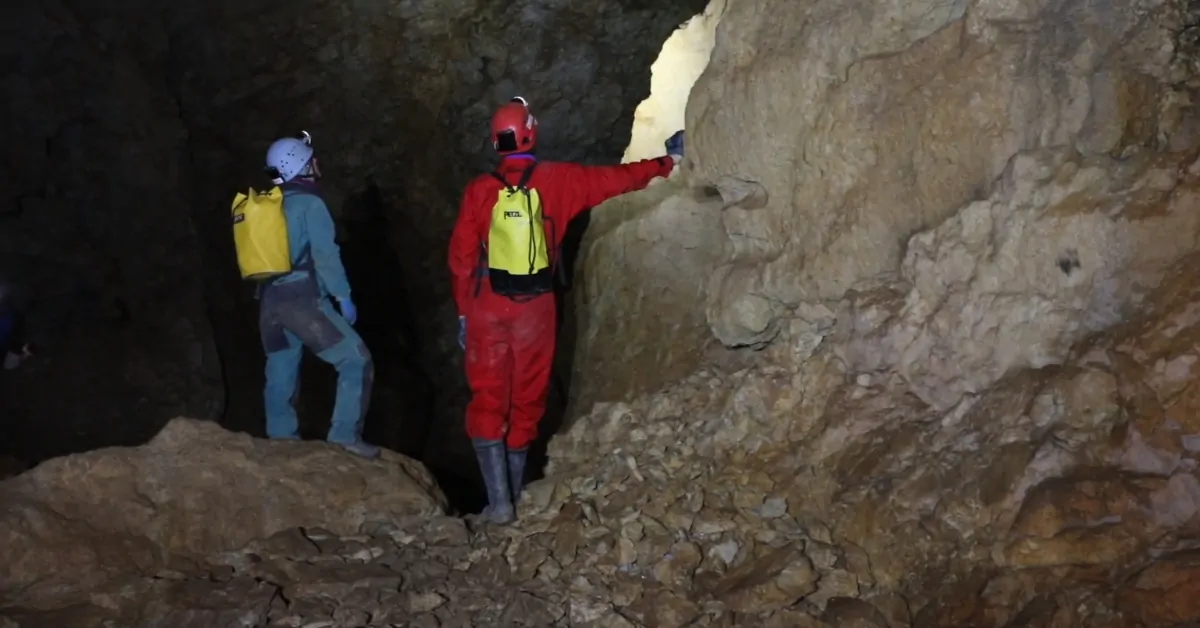Personal injuries from traffic accidents are a growing concern in California, placing significant strain on individuals, families, and the healthcare system.
From severe head trauma to life-altering spinal injuries, the repercussions of these incidents often extend far beyond the crash scene.
Among all motor vehicle accidents, motorcycle crashes stand out as a leading cause of severe personal injuries. Motorcycles, by design, offer less protection to riders, making accidents involving them particularly catastrophic.
In 2021 alone, motorcyclist fatalities in California accounted for 9% of the total U.S. motorcycle fatalities, with a troubling increase in injuries and deaths compared to previous years according to Crashstats.
The data presented in this article reflects the latest available statistics from 2021, as no comprehensive updates for 2022, 2023 or 2024 have been released yet.
Table of Contents
ToggleCalifornia’s Motorcycle Accident Statistics
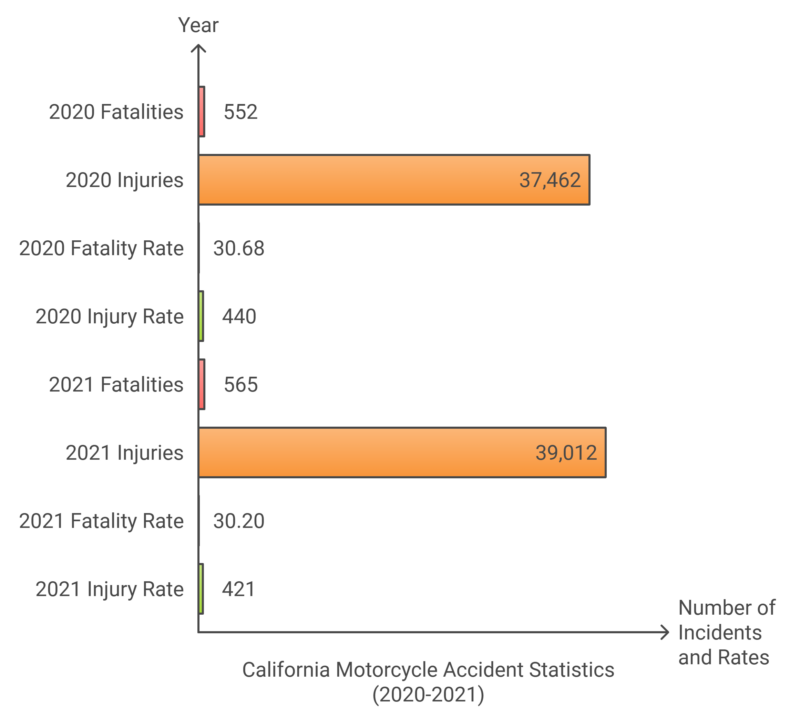
Motorcyclist fatalities in California remain alarmingly high, reflecting nationwide trends. In 2021, California recorded 565 motorcyclist fatalities, representing 9% of total U.S. motorcycle fatalities. This is a stark reminder of the risks associated with motorcycle riding.
Key Crash Characteristics in California
Motorcycle accidents in California are heavily influenced by environmental and behavioral factors:
- Urban vs. Rural: 67% of motorcycle fatalities occur in urban areas.
- Helmet Use: Despite California’s helmet law, 7% of motorcyclists killed were unhelmeted.
- Alcohol Impairment: 36% of motorcyclists killed had a blood alcohol concentration (BAC) of 0.08% or higher.
- Time of Day: Nighttime fatalities accounted for a significant portion of crashes, with impaired riding more prevalent after dark.
Risk Factors for Motorcyclists
Speeding

Speeding is a leading cause of motorcycle crashes in California. In 2021, 33% of motorcyclists involved in fatal crashes were speeding.
Young riders (aged 21–24) exhibited the highest speeding involvement at 49%.
Alcohol Impairment
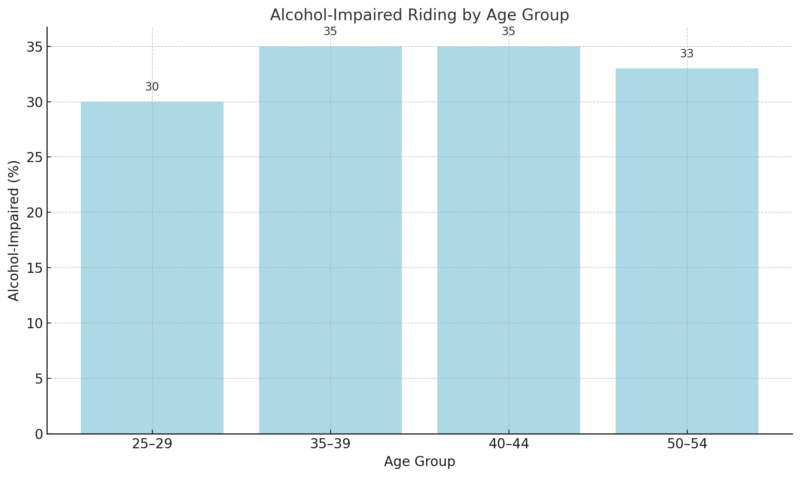
Alcohol-impaired riding remains a persistent problem, particularly among older motorcyclists.
In California, 29% of motorcyclists killed in crashes were impaired, aligning with national trends.
Helmet Usage
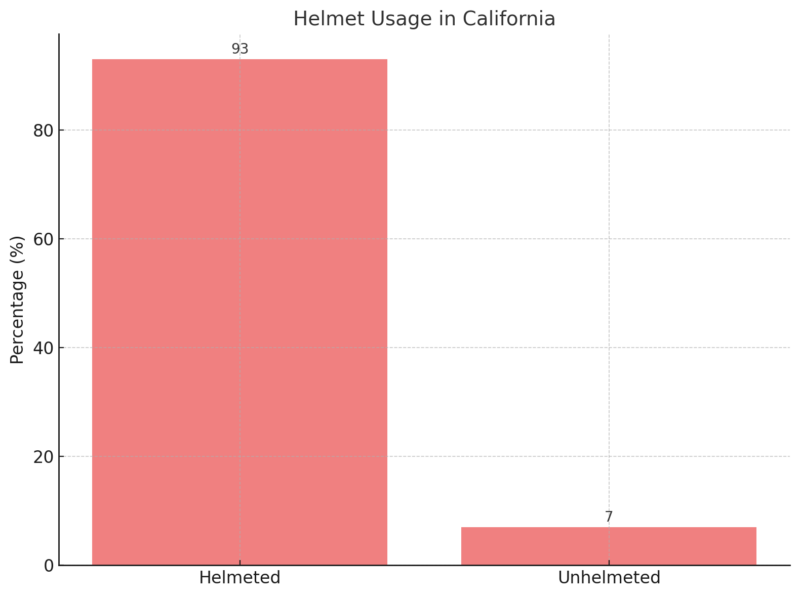
Helmet use significantly reduces the severity of injuries and fatalities.
In California, helmets were worn by 93% of riders involved in crashes, significantly higher than in states without universal helmet laws.
Rising Healthcare Costs
Motorcycle accidents not only lead to severe personal injuries but also impose a substantial financial burden on individuals, families, and the healthcare system.
A recent study from NCBI examining 151 patients hospitalized due to motorcycle-related injuries highlights the alarming costs associated with these accidents.
- Average Cost per Patient: The average cost of hospitalization was $3,083.54.
- Average Length of Stay: Patients spent an average of 5.3 days in the hospital.
- Extremes of Cost and Hospitalization:
- The highest hospital cost for a single patient was $22,504.05, while the lowest was $356.72.
- The longest hospital stay lasted 41 days, while the shortest was one day.
- Cost Efficiency: The average cost per patient per day for the entire sample was $581.80.
These figures underscore the steep financial implications of motorcycle accidents, particularly for patients with severe injuries requiring prolonged hospital stays. With average costs nearing $600 per day, even short hospitalizations can lead to significant financial strain.
If you or someone you know has been involved in a motorcycle accident, click here to learn more about your legal rights and how an experienced attorney can help.
Key Contributors to Rising Costs
- Severity of Injuries: Motorcyclists are more likely to suffer from catastrophic injuries compared to passenger car occupants.
- Long-Term Care: Survivors often require ongoing rehabilitation, adaptive equipment, and in-home care.
- Insurance Claims: Motorcycle accidents lead to higher personal injury claims, driving up premiums and settlement costs.
Ambulance Service Costs in California
2010-2016
A study analyzing ambulance billing practices found that between 2010 and 2016, 85% of ambulance patients received surprise bills due to out-of-network charges. This indicates a prevalent issue with unexpected high costs during this period as per CBS News.
2018
Research by the Kaiser Family Foundation revealed that in 2018, 73% of ground ambulance transports in California resulted in out-of-network charges. The median surprise bill for these services was $1,209, the highest in the nation at that time.
2024
California Healthline notes that in response to escalating costs and the prevalence of surprise billing, California enacted a new law effective January 1, 2024.
This legislation prohibits out-of-network ground ambulance operators from billing patients more than they would pay for in-network services. It also caps charges for uninsured individuals at the Medi-Cal or Medicare rate, whichever is greater.
Comparison of Fatality and Injury Rates
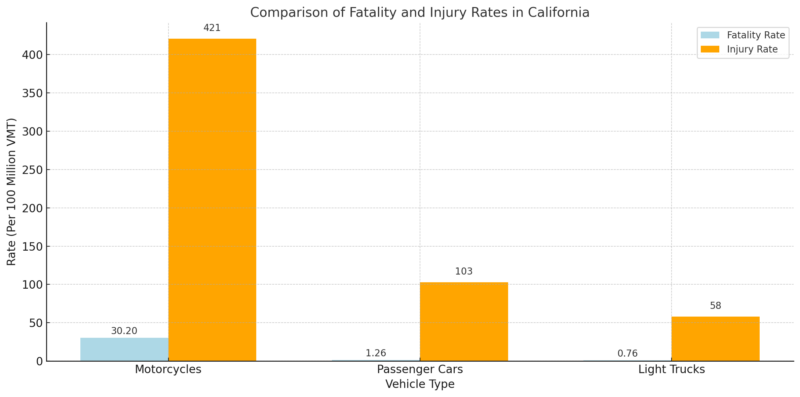
Motorcyclists in California experience disproportionately higher fatality and injury rates compared to passenger car occupants.
Legislative and Safety Measures in California
Universal Helmet Laws
A bill could allow a religious exemption to California’s motorcycle helmet law, specifically for Sikh riders who wear turbans. https://t.co/8wGW0qq47n
— CBS 8 San Diego (@CBS8) June 17, 2023
California’s universal helmet law has been effective in reducing fatalities, but enforcement remains crucial. States without such laws report helmet use rates as low as 53%, compared to 93% in California.
Helmet Law Coverage
Helmet Use (%)
Fatality Reduction (%)
Universal Helmet Law
93
37
No Universal Helmet Law
53
–
Impairment Deterrence
Efforts to reduce alcohol-impaired riding include:
- Sobriety Checkpoints: Targeting high-risk areas during weekends.
- Public Awareness Campaigns: Educating riders on the dangers of impaired riding.
Improving Safety for Motorcyclists

Key Recommendations
- Increase Helmet Compliance:
- Regularly inspect helmet standards to ensure they meet Federal Motor Vehicle Safety Standards.
- Encourage riders to replace helmets after crashes or every five years.
- Enhanced Rider Education:
- Promote advanced motorcycle safety courses focusing on defensive riding and handling emergencies.
- Incorporate hazard perception training for new riders.
- Infrastructure Upgrades:
- Improve road conditions by addressing potholes and debris that disproportionately affect motorcyclists.
- Install motorcycle-friendly guardrails to reduce fatalities in fixed-object collisions.
- Stronger Penalties for Speeding and Impaired Riding:
- Increase fines for speeding and impose stricter penalties for repeat offenders.
- Mandate ignition interlock devices for riders convicted of DUI offenses.
Methodology
This article was crafted through a comprehensive analysis of publicly available data and research reports, including statistics from the National Center for Statistics and Analysis (NCSA) and insights from reputable sources like Crashstats, CBS News, and Kaiser Family Foundation.
We synthesized findings from studies on motorcycle accident rates, economic impacts, and healthcare costs to provide an in-depth overview of the issue.
Key data points were highlighted to ensure accuracy and relevance, while trends were contextualized to reflect California’s unique traffic environment.
Legislative measures and expert recommendations were included to propose actionable solutions.
The goal was to create a balanced, informative article that addresses both the human and economic aspects of motorcycle-related personal injuries
Conclusion

Motorcycle accidents in California present a significant public health and economic challenge.
The data reveal the urgent need for comprehensive measures to improve safety and reduce healthcare costs.
By prioritizing helmet use, addressing risk factors such as speeding and alcohol impairment, and investing in infrastructure and rider education, California can pave the way for safer roads and lower personal injury treatment costs.
Motorcyclists, drivers, and policymakers must work together to turn these statistics around.
The stakes are high—not just in lives lost but in the financial burden placed on individuals and the healthcare system.
A collective commitment to safer practices and strategic interventions can make a lasting impact on California’s roads.
References
- Crashstats: Motorcycles: 2021 Data
- CBS News: Ambulance Surprise Medical Bill Balance Billing
- Kaiser Family Foundation: Half of Emergency Ambulance Rides Lead to Out-of-Network Bills for Privately Insured Patients
- California Healthline: New California Law Caps Ambulance Costs
- NCBI: Study on Hospitalization Costs for Motorcycle Injuries
Related Posts:
- 4 Effective Types of Treatments for Groin Pain in Women
- 15% of People Live Near Coasts – And the Number Keeps Rising
- Rising Dementia Risk and Its Burden on the United…
- Oregon’s Population Is Rising, but The Pace Has…
- Urgent Care vs. Emergency Room - Costs, Speed, and…
- US States with the Highest and Lowest Dental Care…








